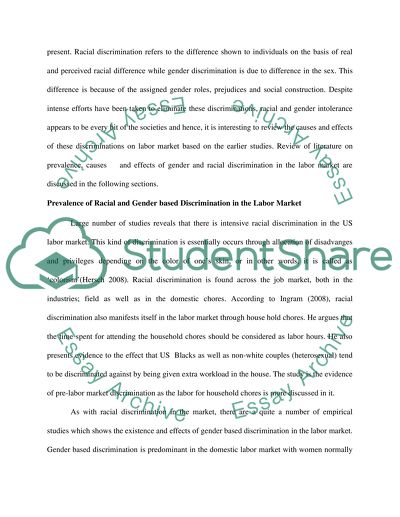Cite this document
(“Labor market discrimination Gender and Racial based Essay”, n.d.)
Retrieved from https://studentshare.org/family-consumer-science/1416187-labor-market-discrimination-gender-and-racial
Retrieved from https://studentshare.org/family-consumer-science/1416187-labor-market-discrimination-gender-and-racial
(Labor Market Discrimination Gender and Racial Based Essay)
https://studentshare.org/family-consumer-science/1416187-labor-market-discrimination-gender-and-racial.
https://studentshare.org/family-consumer-science/1416187-labor-market-discrimination-gender-and-racial.
“Labor Market Discrimination Gender and Racial Based Essay”, n.d. https://studentshare.org/family-consumer-science/1416187-labor-market-discrimination-gender-and-racial.


